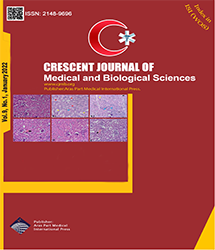
| Original Article | |
| Evaluation of Intrauterine Adhesion After Hysteroscopic Resection of Uterine Septum | |
| Leili Hafizi1, Maliheh Amirian2, Seyedeh Azam Pourhoseini1, Akram Behrouznia1, Mina Baradaran1 | |
| 1Department of Obstetrics and Gynecology, Imam Reza Hospital, Faculty of Medicine, Mashhad University of Medical Sciences, Mashhad, Iran 2Department of IVF and Infertility, Milad infertility Center, Faculty of Medicine, Mashhad University of Medical Sciences, Mashhad, Iran |
|
|
CJMB 2022; 9: 051-055 DOI: 10.34172/cjmb.2022.09 Viewed : 3900 times Downloaded : 2990 times. Keywords : Uterine septum, Septoplasty, Metroplasty, Hysteroscopy, Intrauterine adhesion, Synechia |
|
| Full Text(PDF) | Related Articles | |
| Abstract | |
Objectives: The aim of this study was to evaluate the rate and severity of intrauterine adhesions (IUAs) and their association with septum morphology following the hysteroscopic resection of the uterine septum. Materials and Methods: This cross-sectional study was conducted on patients with septate uteri undergoing hysteroscopic septolysis with scissors. Two months after the surgery, the second look hysteroscopy was performed and the intrauterine cavity was evaluated for IUAs and residual septum. Afterward, the rate and severity of adhesions and residual septum and their association with the septal morphology were studied as well. Results: In general, 30 patients were entered into the study. The incidence rate of adhesions following septoplasty was 23.3%. It was mild and moderate in 16.7% and 6.7%, respectively. The incidence rate of adhesions was not related to the length and width of the septum (P = 0.281, P = 0.495). The rate of the residual septum in second-look hysteroscopy was 56.7%, which was less than 0.5 cm in most cases (33.3%). It was not more than 1 cm in any case. The possibility of the residual septum was significantly higher in long septa (P = 0.045) whereas it was not related to the septum width (P = 0.087). Conclusions: IUA following hysteroscopic septolysis is a possibility, especially in infertile patients which is often mild. The presence of a uterine factor in such patients may justify the risk of increased IUAs in our study in comparison to others. Therefore, it is able to perform second-look hysteroscopy in infertile patients with a septate uterus for the diagnosis and early treatment of IUAs. |
Cite By, Google Scholar
Google Scholar
PubMed
Online Submission System
 CJMB ENDNOTE ® Style
CJMB ENDNOTE ® Style
 Tutorials
Tutorials
 Publication Charge
Medical and Biological Research Center
About Journal
Publication Charge
Medical and Biological Research Center
About Journal
Aras Part Medical International Press Editor-in-Chief
Arash Khaki
Deputy Editor
Zafer Akan


















